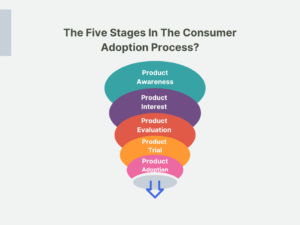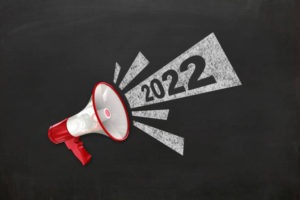Has it ever happened to you that you saw a brand’s product or service you were unaware of and would later become a loyal user of? If yes, then that brand’s marketers are doing a pretty good job, because they may understand well what the stages of the consumer adoption process are and how to implement it in the market.
Good marketers know how to influence the different stages of the product adoption process through marketing strategies.
So, what is the consumer adoption process? The Consumer adoption process is a mental process by which a customer passes from first learning about an innovation to final adoption.
Adoption is the decision by the customer to become a heavy user of the product.
Today many companies work hard to create a product, but to sustain and succeed in the market, the companies also must create a process that successfully walks their consumers through the steps of the adoption process in consumer behavior.
And so let’s learn these five stages of the consumer adoption process in the case of Apple and how important it is for businesses to be successful.
What Are The Five Stages In The Consumer Adoption Process?
The 5 stages of the adoption process are Product Awareness, Product Interest, Product Evaluation, Product Trial, and Product Adoption.
Product Awareness:
The first stage is about introducing a new product and making the customers aware of it. If the customer does not know your product, it means the product still no exist in the market.
And for small companies, generating awareness of the new product is challenging.
In the awareness stage, the unengaged customer becomes aware of a new product and might be interested in gathering more information about it. In this step, the companies can make these customers familiar with innovation through social media, commercials, banners, and so on.
As an example, Apple always creates awareness about their new products through their landing pages, social media channels, and spreading a word of mouth. Have you ever had a moment when you did not know when a new Apple product came out?
Product Interest:
In the product interest stage, the customer is ready to know more about the company’s product and starts collecting more information.
So it is time for consumers to find out whether the innovation relates to their needs. In this step, it plays an important role to guide the consumers through the interest stage by providing easily accessible information on innovation. That is to say, the company representatives will be available for asking more information or they can make information the customer might want to know available online.
As an example, After introducing a new product, Apple creates an event for all new products. In this event, the customers will be aware of all information like features, functions, prices, and availability of it. Getting heard about it from the company is more reliable and satisfactory.
Product Evaluation:
In the product evaluation stage of the consumer adoption process, consumers use accumulated information to evaluate a new product. They consider all the significant aspects to judge the worth of innovation. And individuals can know the product meets their specific needs.
Therefore, the availability of new product information is important to decide whether the product should be tried.
In this stage, the products of most companies fail to pass to Product Trail process, because the company fails to show how the product works or can not provide enough reason why their products are different from existing ones and why the customer should start using your products from ones they use regularly.
As an example, when Apple products come out, they are discussed by bloggers comparing the features, functions, or prices with other companies’ ones.
Product Trial:
This is the stage where the customer is ready to use or examine the innovative product on a trial basis.
It is the chance for consumers to determine its value.
If the product is not expensive, individuals may try it once, and if not satisfied they just stop buying or using it.
However, in terms of expensive products, it makes the customer think twice before purchasing.
Therefore, it is essential to have a free trial or samples for such products or services at this stage.
So, if the product meets the consumers’ expectations, they enter the adoption stage which results in a significant impact on long-term purchasing behavior.
By way of example, You can see and try out all Apple products such as headphones, and laptops in their store. And staff members are there to teach you if you do not know how to use it.
Product Adoption:
At the final stage, the consumers decide to become regular users of your product or service.
In other words, you might be able to offer what they want or need and end with satisfaction. Product adoption is indicated most directly by sales.
From this point, the company needs to be careful and ensure the product’s quality, availability, and accessibility to the consumer.
For instance, Apple is doing a nice job on this, because you may have witnessed your friends or family members used Apple products once, then they turned to become a regular purchasers of them. Even the line-up for Apple’s innovations in the store can approve our words.
In conclusion
As we mentioned, Marketers have a profound impact on the process by which at first the consumers do not know about their products and later become their regular users.
So the company’s customer success team is responsible for making sure the consumer adoption process is going smoothly. If it goals well, this can drive massive sales.
If young or small companies do not know how to manage the 5 stages of the consumer adoption process, the best method is to learn from others who are doing it successively such as Apple, and Costco.












